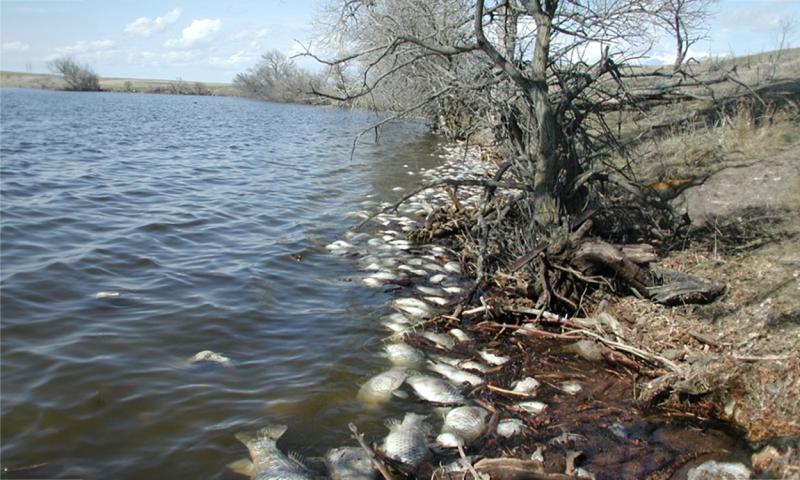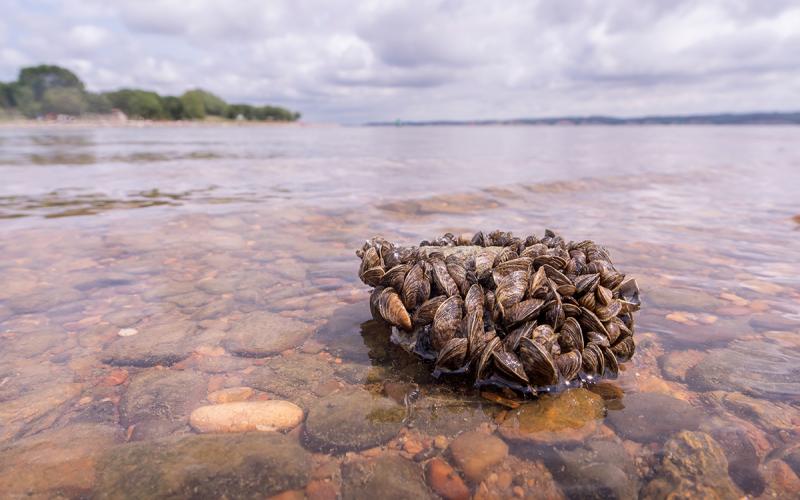
There are many ways for fish kills to occur in our freshwater lakes. Examples may include diseases and parasites, thermal stress, or spills and/or illegal discharges of a pesticide or other toxic substance into the water. However, the most-common cause for a fish kill is by far dissolved oxygen depletion.
Seasonal Oxygen Depletion
Most fish kills occur during two periods of the year: late winter or late summer. During a harsh winter, heavy snowpack can block sunlight from penetrating the ice and reaching aquatic phytoplankton, which form the base of aquatic food webs. Reduced photosynthesis results in low oxygen production under the ice. In turn, respiration by fish and other organisms, combined with the breakdown of dead and decaying vegetation by bacteria can quickly use up the available oxygen in the water. Fish then become stressed and can die due to the low oxygen levels.
In the summer, fish kills can occur on a diel-time scale. In open water, oxygenation of a lake or pond can occur through atmospheric diffusion, which can be enhanced by turbulence (for example, wind and wave action) or aquatic plant photosynthesis. While photosynthesis occurs during daylight hours, the process is turned off at night when a plant’s respiration cycle begins. If oxygen depletion via respiration (both plant and animal) is greater than oxygen production, fish can become stressed, and a kill can occur. This can occasionally happen during calm and overcast periods of warm weather. A summer kill may also occur in deeper, stratified lakes when large storms can cause the bottom hypoxic layer to temporarily mix with the top. If the hypoxic layer is large enough, this mixing can cause the dissolved oxygen concentration in the entire lake to be reduced enough for a fish kill to occur.

Cultural Eutrophication
While summer and winter fish kills can and do occur naturally in our shallow, productive prairie lakes, the frequency and severity of these kills can be influenced by human activity. Cultural eutrophication (also known as anthropogenic eutrophication) is the rapid increase of nutrient availability (for example, nitrogen and phosphorus) in a waterbody by human-generated activities. Cultural eutrophication dramatically speeds up the aging process of a lake compared to natural eutrophication. This nutrient enrichment has increased the frequency and severity of algal and cyanobacteria blooms in many of our freshwater lakes. Excessive blooms increase the biological oxygen demand (abbreviated as BOD) of a waterbody, and fish kills can occur. Most summer kills are usually associated with a heavy bloom in the lake. If we are to have healthy lake ecosystems, we must be cognizant of what is entering the waterbody from its associated watershed. A fishery is only as healthy as its watershed.


